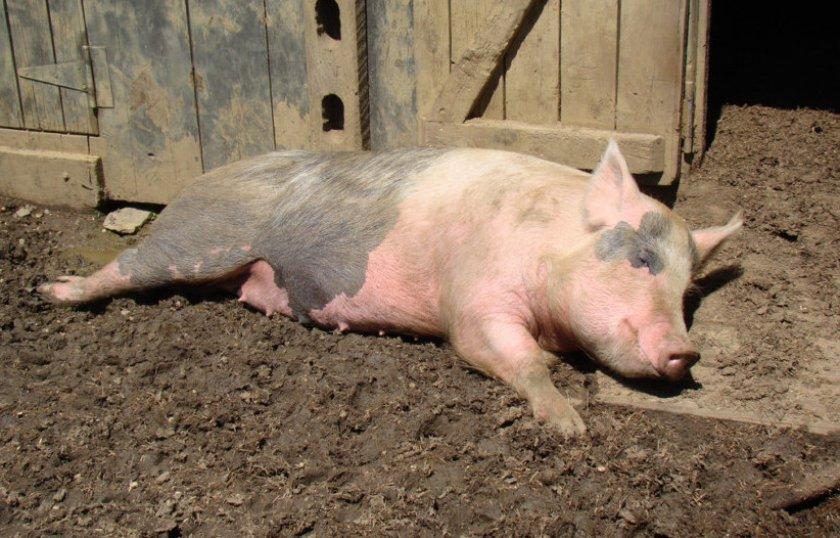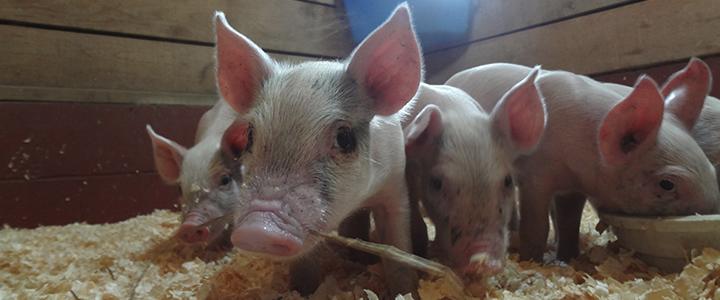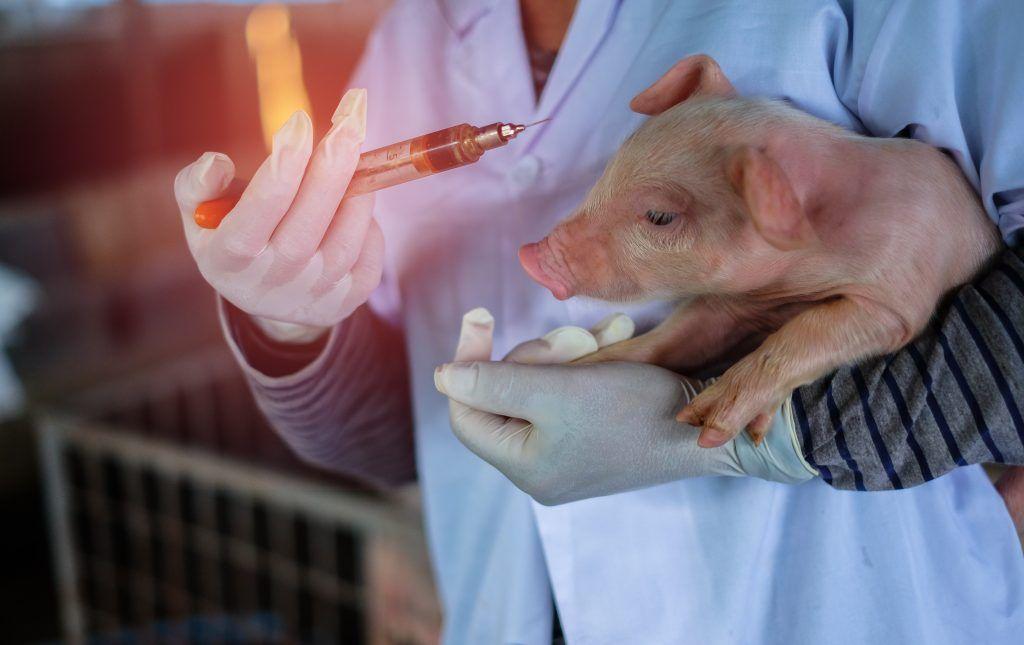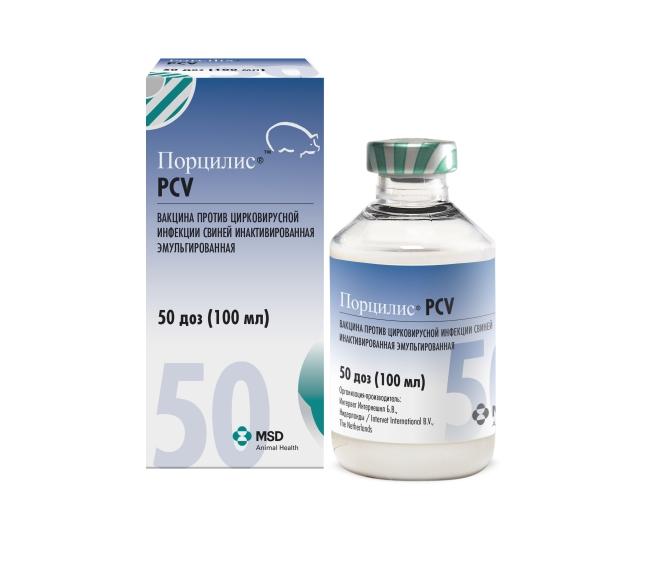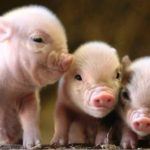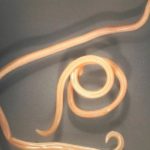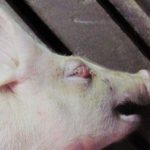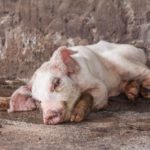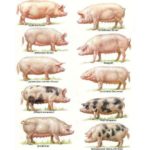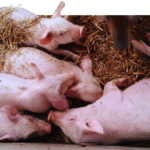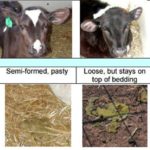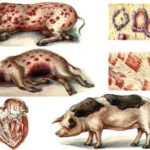Aujeszky's disease, or pseudorabies, is an unfortunately common disease in pigs and other livestock. Symptoms of the disease can manifest themselves in different ways: in some animals, fever develops sharply, itching and redness appear on the body, in others, paralysis and convulsions occur. The disease is widespread, the disease is contagious, and animals require vaccination.
Prevalence of the disease
The deadly virus was first diagnosed, discovered and systematized in 1902 by the Hungarian scientist Aladar Aujeszky.In 1938, the disease was officially included in the register of diseases of domestic animals. In our country, the first outbreaks of the disease were recorded at the beginning of the 20th century; in those days, farmers had no idea how to deal with the deadly disease; the virus caused damage to households and livestock farms. Aujeszky's contagiousness allowed the virus to destroy livestock in a few weeks.
Causes of the disease
The causative agent of Aujeszky's disease is the Hegresviridae virus. The main causes of infection in livestock include:
- Lack of vaccinations.
- Infection from sick or recovered animals.
- Intrauterine infection of young animals.
- Infection through contaminated water, feed, bedding.
- Transmission of the disease by rodents and birds.
- From the corpses of dead animals.
On a note. An animal that has recovered from Aujeszky's disease becomes a virus carrier and, through contact with other animals, is capable of transmitting the pathogen for 3 years after the disease. Pseudorabies viruses are resistant to antibiotics and survive in litter and slurry for three months.
Symptoms and forms of Aujeszky
The incubation period of the disease is up to 20 days. During this period of time, the virus matures and settles in the body of the infected animal. The first signs of an onset of illness include:
- Animal anxiety.
- Decreased appetite, refusal to eat.
- Damage to the respiratory system: runny nose, cough, production of large amounts of saliva, frequent intermittent breathing.
If there is immunity to the disease, animals can suffer from pseudorabies in a latent form, but often pigs undergo a severe course of the disease and enter a comatose state: convulsions begin, head throwing back, fever. An infected pig loses orientation in space, the animal begins vomiting and diarrhea with blood.The deadly virus celebrates its final victory at the moment it defeats the host’s central nervous system.
With further development of the disease, the following Aujeszky's signs occur:
- Aggression of animals towards humans.
- Vomiting, diarrhea with blood.
- Impaired gait, grinding of teeth.
- Partial paralysis.
- Fever.
- Epileptic seizures.
As the disease progresses, animals develop swelling of the brain and lungs. Veterinarians distinguish three forms of Aujeszky's disease in pigs:
- mixed;
- oglum-like;
- epileptic.
The epileptic form is especially difficult, the nervous system of the sick animal is affected, seizures begin: the animal squeals, throws back its head, the pupils dilate, then paralysis and death occur. The oglum-like form is most often found in young animals. In piglets, the shape of the skull is distorted, the animal cannot walk normally, the gait is noticeably impaired, then consequences from the gastrointestinal tract occur: vomiting, diarrhea with blood.
The mixed form includes damage to all systems in the body. The animal experiences sudden changes in health, vomiting, diarrhea, cough, purulent discharge from the eyes and nose, fever and convulsions. Piglets under the age of 1 month die in 99% of cases. If fetuses are infected in utero, sows may miscarry or stillbirth, and the fetuses may be partially mummified.
Diagnostic rules
The presence of the virus in animals can only be determined in laboratory conditions. Blood is taken from infected individuals, and pieces of internal organs, lymph nodes, brain and spinal cord are taken from dead individuals, and virological and serological studies are carried out.
The placenta is taken from aborted sows for examination.During the study, it is important to take into account the full clinical picture of the disease and highlight the periods of the most acute course of the disease. It should be remembered that a clear sign of the disease in cattle and other animals is itching and scratching of the skin over the body. This symptom is not typical for pigs; the virus primarily affects the respiratory system, and most often occurs in the form of pneumonia or influenza, which often interferes with the correct diagnosis of the disease.
How to treat Aujescu in pigs?
Despite the severity of the disease, it is still possible to save infected animals, but there are no specific medications against Aujeszky. Veterinarians identify several treatment regimens for the deadly disease and ways to alleviate the condition of animals, but a proven remedy for pseudorabies is vaccination and immunization of pigs on the farm before outbreaks of infection occur.
Pharmacy products
To date, there is no drug against Aujeszky; antibiotics are powerless in the treatment of false rabies virus in piglets, even in combination with convalescent sera. Positive results have been recorded in the treatment of pigs with hyperimmune sera in combination with gamma globulin.
The officially recognized vaccine against Aujeszky is VGNKI; in farm complexes where cases of Aujeszky's infection have been recorded, piglets begin to be vaccinated from two days of age. In addition to the dry VGNKI vaccine, Porcilis and other inactivated drugs are often used.
Folk recipes
There are no traditional ways to cure the deadly virus. To maintain the immunity of animals, it is important to create a balanced diet for pigs, taking into account the breed and conditions of detention; in the winter-spring period, it is important to add vitamin premixes as a food additive.
It should also be remembered that after suffering the disease, the animal remains a carrier of the virus. In farms where animal deaths and cases of disease have been recorded, it is necessary to introduce quarantine.
Prevention measures
Preventive measures against the disease include:
- Regular disinfection of premises.
- Quarantine for recovered animals.
- Vaccination.
- Immunization.
- Preventive examinations of animals by veterinary services.
Timely vaccinations, high-quality care for the pigsty, a properly formulated diet for piglets are the goal and task of the farmer; the daily growth of the young animals, the health and productivity of the animals will depend on the quality of the feed.

